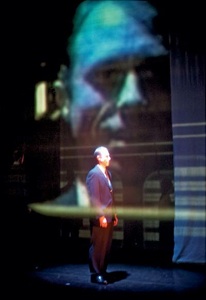I'm reading Tune In, the first volume of Mark Lewisohn's projected three-volume biography of the Beatles, All These Years. It's a massive achievement; Lewisohn has spent his life in scholarly Beatlemania and this book seems to have tracked down every document, verified and disproved all the myths, and tells a compelling story, despite taking nearly 1000 pages to get to 'Love Me Do'. Well, maybe because it takes that long.
Because the story is well known, it's fascinating to see it inching forward in such detail. It's also interesting because the slow route (I think this volume alone is close to half a milliion words, not including endnotes) gives a chance to revisit, rethink and, in this story, experience what happened as if it were not inevitable. The detail allows us not to treat the early Liverpool years as a prelude to the real thing; Lewisohn gives us a whole book on The Beatles before they became famous and it becomes so clear how contingent and peculiar their story was.
The first book I read on The Beatles was Philip Norman's biography, Shout! (1981). It's a decent enough narration of the story, but it is rather notorious for its animus against Paul McCartney who is presented as cold, calculating, and conformist, the man who broke up The Beatles for his own gain. It's fine to prefer John Lennon's songs or solo career to Paul McCartney's, of course, but, as a friend of mine recently put it, it's not a zero-sum game. You don't have to hate John to like Paul or vice versa.
One of the many aspects of the Beatles story that remains compelling is the tightly-locked structure of personalities in the group. I'd say most people could find an echo of their own personality somewhere in The Beatles. This may be what leads some people to venerate one Beatles to the exclusion of another. If you fancy yourself as an intuitive artist, a non-conformist rebel, a sarcastic, taboo-breaking misfit, you might align yourself with John. If you believe yourself to be a quiet dreamer, with inchoate spiritual longings, someone who waits in the background to surprise the world with your talent, you might feel drawn to George. And so on.
Of course, no one's personality is that clearly or cartoonishly drawn, though that didn't stop Philip Norman, yet there are archetypes visible here. In Tune In, there's a vivid and thrilling account of the Woolton Village Fete on 6 July 1957, famous as the day John and Paul met. (Dutifully, Lewisohn records conflicting accounts that suggest they may have previously met on a bus or outside a newsagent's, but this was certainly the first time they met as aspiring musicians.) For those who like the simple binaries, there's a snapshot of two very different attitudes:
As they paid their threppance admission they could hear the Quarry Men playing and went straight up to see them. Here, then, were Ivan's friend's - and right off, the singer had it. He looked strong and assertive, clearly the leader, cool in his checked red and white shirt. Paul, the keen guitarist, watched the fingers and couldn't work out what chords he was playing, not yet realising they were banjo chords. And also he noticed the song 'He was singing Come Go With Me, which I thought was fabulous until I realised they weren't the right words. He was changing them. 'Come go with me ... down to the penitentiary' - he was nicking folk-song words and chain-gang words and putting them into the Dell-Vikings song, a clever little bit of ingenuity'. (p. 128)
If you like your John Lennon as the improviser, the bricoleur, the cool rebel, here he is. And now, we go forward around 3 hours and John and Paul are hanging out. Conversation, obviously, turns to music:
Not one to hold himself back, Paul asked John for a go on his guitar [...] The way he held the instrument upside down prompted a few sniggers, but after a minute or two of fiddling Paul suddenly stopped and burst into Twenty Flight Rock. Here, right away, was talent, already way out of John's league. And it wasn't just that Paul could get through the song from start to finish, singing with a strong rocking voice and playing the chords with confidence, it was knowing all the words. [...] After this, Paul went into full exhibition mode, showing off, confident of his ability and aware of his audience. He demonstrated one or two chords he thought the gathering might not have heard, and he played them some other numbers (Be-Bop-A-Lula was one, something by Elvis surely another). Then, showing real neck, he switched to piano and started belting out his Little Richard routine, yelling alone into the quiet of a cavernous church hall. (pp. 130-131)
And if you like your Paul McCartney as the natural musical genius, the multi-instrumentalist, the perfectionist, the showman, even as the show-off, here he is in full. It's a beautiful pair of capsule descriptions of what they would always be. But here's why you don't have to choose between them. This is what Paul thought of that first sight of John:
My [real] first impression was that it was amazing how he was making up the words. He was singing Come Go with Me by the Dell-Vikings and he didn't know one of the words. He was making up every one as he went along. I thought it was great. (quoted, p. 128)
And here's what John thought of that first sight of Paul:
It went through my head that I'd have to to keep him in the line if I let him join, but he was good, so he was worth having. He also looked like Elvis. I dug him. (quoted, p. 132)
In other words, they saw in each other their opposite and they loved it and that's why it's not a zero-sum game and you don't have to choose because we had both.



![photo[1].jpg](https://images.squarespace-cdn.com/content/v1/513c543ce4b0abff73bc0a82/1362919072201-PZO854G4SEB794DVOEI8/photo%5B1%5D.jpg)
